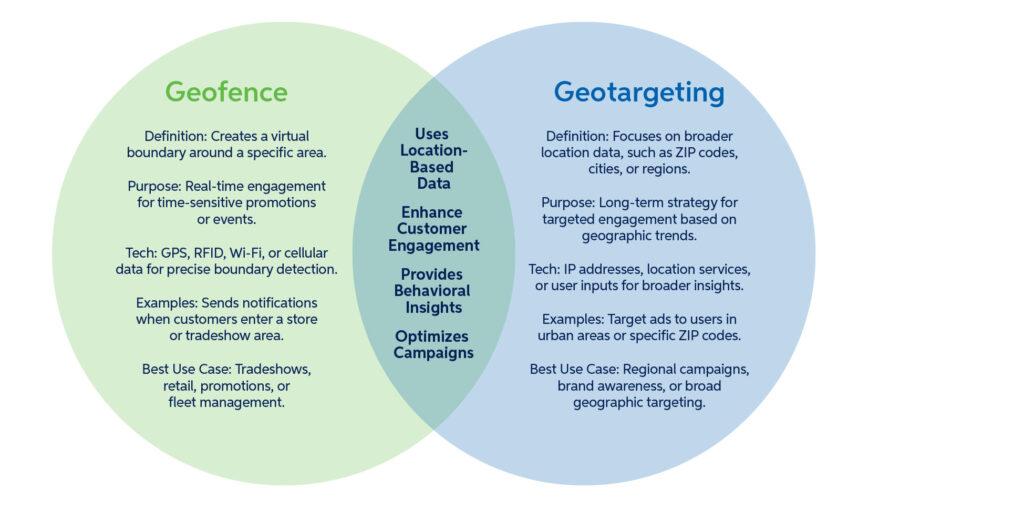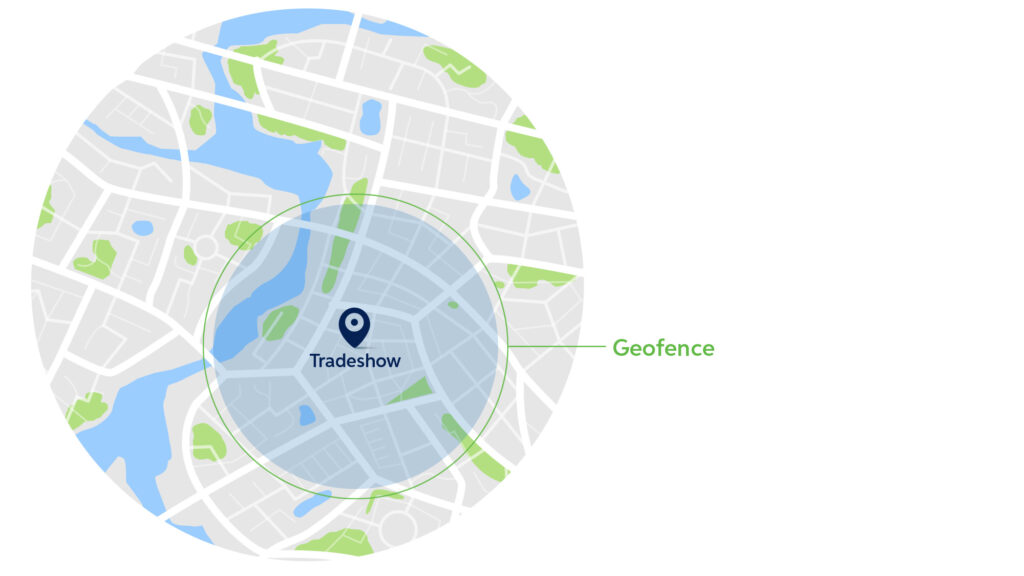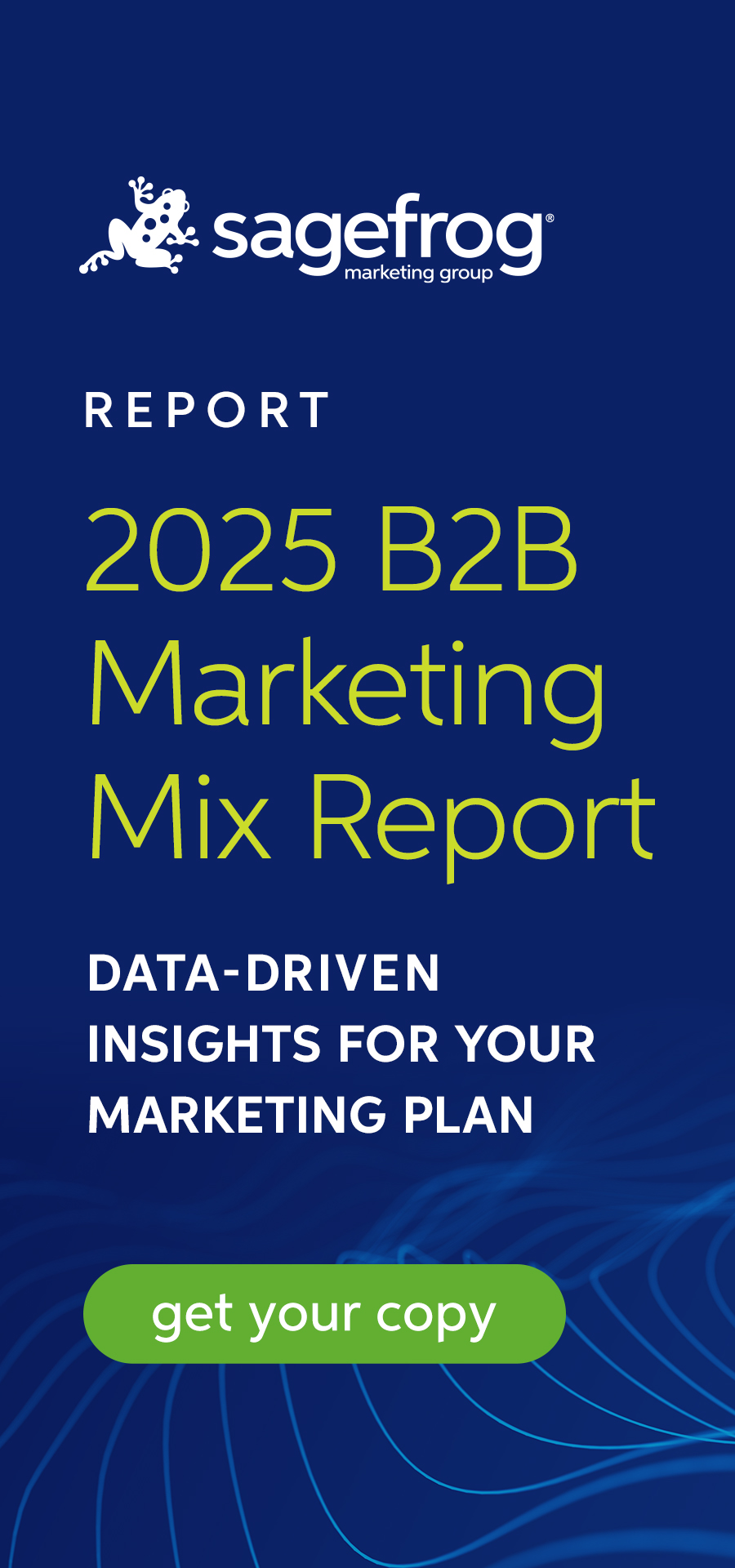Reaching customers at the right place and time is crucial for successful marketing. This idea brings us right to our topic — geofencing. Geofencing marketing offers businesses a unique way to engage with customers based on their geographical location, opening up a world of possibilities for personalized marketing, improved customer insights, and enhanced operational efficiency. Whether you’re an online wholesaler wanting to drive orders, a logistics company aiming to optimize fleet management, or a marketer seeking to boost campaign effectiveness, geofencing marketing tools can be a game-changer.
This comprehensive guide will explain the fundamentals of geofencing marketing tools, their benefits and applications, how to use them effectively, and how to start implementing your geofencing strategy.
Skip to a Section
- What Is Geofencing Marketing?
- Geofencing vs. Geotargeting
- How Does Geofencing Marketing Work?
- Geofencing Marketing Examples
- Types of Geofencing Ads & Tools for B2B Marketing
- How Can Geofencing Benefit B2B Marketing?
- Is Geofencing Marketing Effective?
- Does Geofencing Fit Your B2B Marketing Goals?
- How to Set Up Geofencing Marketing?
- Tips for Success with Geofencing Marketing Tools
- Geofencing FAQs
- Getting Started with Geofencing Marketing
What Is Geofencing Marketing?
Geofencing is a location-based service in which an app or other software uses GPS, RFID, Wi-Fi, or cellular data to trigger a pre-programmed action when a mobile device or RFID tag enters or exits a virtual boundary set up around a geographical location, known as a geofence. Depending on the configuration, the established geofence can trigger mobile push notifications, send targeted advertisements on social media, enable tracking on vehicle fleets, disable specific technology, or deliver location-based marketing data. Geofencing techniques, like geofencing ads, are powerful for businesses in various industries, including retail, logistics, and, in this case, marketing.
Geofencing vs. Geotargeting
While geofencing and geotargeting both use location-based technologies to enhance marketing strategies, their approaches and applications differ.
Geofencing marketing tools create a virtual boundary around a specific geographical area. When users enter or exit this boundary, predetermined actions, such as sending a push notification or serving an ad, are triggered. This approach focuses on engaging users in real time based on their current physical location, making it ideal for time-sensitive promotions or events.
Conversely, geotargeting refines targeting based on broader location data, such as ZIP codes, cities, or regions. It leverages user demographics and behavior within these areas to deliver more personalized marketing messages. Unlike geofencing ads, geotargeting doesn’t necessarily require users to enter or exit a specific boundary; instead, it relies on broader geographic trends and preferences.
In short, geofencing marketing tools excel at moment-specific engagement, while geotargeting tactics provide a broader, more nuanced approach to location-based marketing that is less real-time and location-bound.
How Does Geofencing Marketing Work?
In the context of marketing, the primary purpose of geofencing marketing is to target customers based on their physical location. Marketers can send personalized advertisements, offers, and alerts when a customer’s device enters a geofence. This strategy allows businesses to target individuals in or near their physical stores, thus increasing the likelihood of immediate conversions.
Geofencing marketing tools also offer valuable insights into customer behavior. Businesses can analyze foot traffic patterns, dwell times, and conversion rates by tracking when and how often customers enter a geofence. This data can inform marketing strategies, improve customer segmentation, and optimize locations.
Geofencing Marketing Examples
Geofencing offers marketers unique strategic opportunities for customer engagement and data collection. Some key examples include:
- Event Targeting: By setting up geofences around specific events, marketers can reach out to attendees who have already shown an interest in their industry, thereby enhancing promotional efforts.
- Competitor Targeting: Creating geofences around competitors’ locations allows businesses to serve targeted advertisements or promotions to potential customers nearby.
- Dynamic Targeting: This strategy involves personalizing marketing messages based on a customer’s location within a geofence. By delivering relevant ads and offers, businesses can increase engagement and conversions.
- Retargeting: Geofencing isn’t just about immediate engagement. Marketers can use collected data to retarget customers with relevant advertisements long after they’ve left the geofenced area, thus extending the customer journey.
- Data Collection & Analysis: Tracking movements within the geofence, such as foot traffic patterns or dwell times, allows marketers to understand customer behaviors and preferences more deeply. This valuable data can inform future marketing strategies and business decisions.
Strategically applying these techniques can enhance the effectiveness of geofencing, driving conversions and providing valuable insights into customer behavior.
Types of Geofencing Ads & Tools for B2B Marketing
Geofencing can be tailored to various B2B applications, each serving unique objectives. Here are the main types:
- Event-Based Geofencing: Used at trade shows, conferences, and industry events, this geofencing targets attendees with real-time notifications, booth invites, or post-event follow-ups. For instance, B2B companies can create geofences around event venues to capture the attention of potential clients actively seeking solutions within their industry.
- Competitor Geofencing: By setting geofences around competitors’ locations, businesses can attract their audience with compelling offers or alternative solutions. For example, a logistics company might target clients visiting a rival’s warehouse or office to showcase their unique services.
- Office and Facility-Based Geofencing: Businesses with physical office locations can use geofencing to target nearby companies, offering localized services or inviting them to visit for consultations. This approach is beneficial for regional promotions or campaigns.
- Employee and Fleet Management: Beyond customer engagement, geofencing can also optimize operations. Logistics companies, for example, use geofencing to monitor fleet movements, track deliveries, or ensure route compliance.
- Hybrid Campaign Geofencing: Hybrid campaigns combine event and regional geofencing and leverage multiple boundaries for dynamic targeting. For example, B2B marketers can use overlapping geofences to engage customers at different stages of the buyer’s journey within distinct geographical zones.
By strategically implementing these types, B2B marketers can harness geofencing’s potential to drive targeted engagement, enhance customer experiences, and maximize ROI.
How Can Geofencing Benefit B2B Marketing?
Geofencing offers a multitude of benefits, particularly for B2B companies. Put simply by our digital marketing expert Brooke Logan, “We can retarget users after they’ve left the geofenced area, even months later. As long as users were within the geofenced location for the duration of the original campaign, we can continue to retarget them and drive them further down the funnel.”
Beyond retargeting, geofencing enhances B2B engagement with location-specific notifications, such as when potential clients are near trade show booths or office locations. Personalized experiences thrive with content tailored to a business’s specific location, leading to higher customer satisfaction and conversion rates.
B2B marketers can also employ geofencing for event targeting at trade shows, regional promotions that distinguish between counties or area codes, or broad-spectrum campaigns targeting states or entire countries. Additionally, insights from competitors’ foot traffic and visitor behaviors can be harnessed by setting up geofences around rival locations. In essence, geofencing empowers B2B marketers to create campaigns that are not only geographically nuanced but also highly strategic, driving engagement, insights, and an improved ROI.
Is Geofencing Marketing Effective?
Geofencing is an effective tool for businesses, driving your company’s app usage, return on investment, and tangible improvements in business performance. A standout example is IKEA, which implemented geofencing to overcome the challenge of its stores in distant suburbs.
IKEA deployed geo-location technology in their marketing campaigns to entice shoppers to travel to these out-of-the-way stores. Their marketing team also launched innovative campaigns like “Buy With Your Time,” where shoppers could convert their travel time to currency, and mobile ads in Jakarta that estimated travel times to stores based on real-time traffic conditions. These initiatives increased footfall and motivated customers to make repeated visits, demonstrating the power of geofencing in improving customer engagement and driving business growth.
In the B2B realm, a lesson from IKEA’s success is the value of understanding and accommodating the logistical realities of customers. Whether targeting potential clients near a trade show or providing real-time delivery service updates, geofencing is a powerful tool to optimize location-based strategies and enhance customer engagement.
Does Geofencing Fit Your B2B Marketing Goals?
In B2B marketing, geofencing’s utility isn’t universal; its value depends mainly on the nature of your business and target audience. Geofencing can be powerful if your B2B company operates from a specific location or provides localized services. For instance, businesses offering delivery and property management or looking to connect with other companies in particular regions might find geofencing particularly effective. However, the effectiveness of geofencing also hinges on your audience’s tech-savviness and openness to location-based services. Geofencing might not be as impactful if your target businesses are less digitally inclined or have privacy or data compliance concerns.
As with any marketing tactic, geofencing involves costs, from technology setup to campaign management. But, if executed well, it can generate leads, drive conversions, and offer significant ROI, especially if your goals include boosting local engagement, driving visits to your location, or gaining location-based insights.
Always remember to navigate the legal and ethical aspects of geofencing responsibly. Since it involves tracking locations, obtaining proper consent from users is a must. If location isn’t a key factor for your business, many other marketing strategies might better suit your needs. Partnering with an experienced agency can guide you through these intricacies, ensuring compliance and best practices at every stage.
How to Set Up Geofencing Marketing
Setting up a geofence involves selecting a suitable platform, defining the geofence area, setting the radius, deciding on the actions for when someone enters, exits, or dwells in the geofence, and creating the geofence using platform-specific tools. After testing to ensure everything works as expected, you can launch your campaign, keeping a close eye on the results for any needed adjustments. Remember, the exact process varies based on your chosen platform, so always follow their specific instructions.
Tips for Success with Geofencing Marketing Tools
These are the basics we rely on to elevate our own geofencing game. Consider these tips:
- Fine-tune your geofence size to match your industry’s unique needs and location density.
- Strike a balance between precision for targeted interactions and reach for broader audience engagement.
- Use A/B testing to refine your geofencing strategy, exploring different geofence sizes, messages, and timing.
- Ensure your messages are relevant to the location and moment for maximum impact.
- Nail the timing of your messages to avoid missed opportunities.
- Respect privacy, be transparent about your use of geofencing, provide opt-out options, and only collect necessary data.
- Regularly analyze campaign data to adapt and improve your strategy.
These guidelines will boost geofencing effectiveness, driving more meaningful, location-based customer interactions.
Geofencing FAQs
Are There Any Disadvantages to Using Geofencing Marketing?
Yes, there are a few potential disadvantages to using geofencing. Geofencing involves tracking users’ locations, which can raise privacy concerns. Users who feel their privacy is being invaded may view the business negatively. Geofencing also relies on users having a mobile device with location services enabled. And, while geofencing can be pretty accurate, it’s not perfect. Factors such as signal strength and device settings can affect the accuracy of location data.
How Accurate is Geofencing Marketing?
Geofencing accuracy can vary based on several factors, including the technology used (GPS, Wi-Fi, cellular data, or RFID), the location settings on the user’s device, and the environment (urban areas with tall buildings can sometimes interfere with signals). Generally, geofencing accuracy can range from a few meters with GPS or RFID technology to a few hundred meters with Wi-Fi or cellular data.
Can Users Block Geofencing Ads?
Yes, users can block geofencing ads. Most smartphones allow users to turn off location services entirely or on an app-by-app basis. If a user turns off location services for a particular app, that app will not be able to use geofencing. Users can also decline to permit apps to access their location data in the first place.
What’s the Difference Between Geotagging and Geofencing?
Geotagging and geofencing are both location-based services, but they are used for different purposes. Geotagging adds geographical metadata, such as latitude and longitude coordinates, to various media. This could be a photo, a tweet, a status update, etc. The information added can be anything from the coordinates of where the media originated to the location where an event took place. On the other hand, geofencing uses GPS or RFID technology to create a virtual geographic boundary, enabling software to trigger a response when a mobile device enters or leaves a particular area. As explained earlier, this is primarily used for location-based marketing or data collection.
Getting Started with Geofencing Marketing
While the process might seem straightforward, the nuances and intricacies can be challenging to navigate without expert guidance. Choosing the right platform, defining precise geographical parameters, and ensuring the desired actions align with your brand’s voice are just the tip of the iceberg. Consistent monitoring, testing, and refinement are crucial to maximizing the potential of your geofencing strategy. This is where the experience and knowledge of a specialized agency like Sagefrog come into play.
By partnering with someone who knows geofencing inside and out, you gain our expertise and a holistic approach that seamlessly integrates this tactic into your broader marketing strategy. Our team ensures that every geofencing campaign is meticulously planned and executed to help drive engagement, boost conversions, and provide invaluable insights into customer behaviors. Ready to get started? Talk to our experts today.
- Geospatial World. “IKEA Uses Geo-location Technology to Drive Footfalls to its Stores.” Geospatial World, 2021, https://www.geospatialworld.net/prime/case-study/location-and-business-intelligence/ikea-uses-geo-location-technology-to-drive-footfalls-to-its-stores/.






